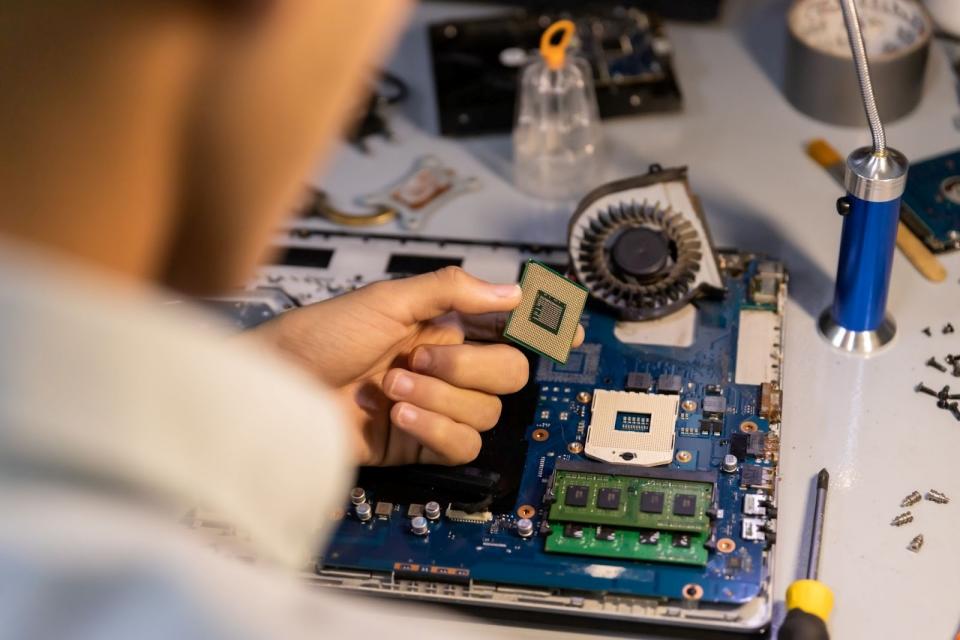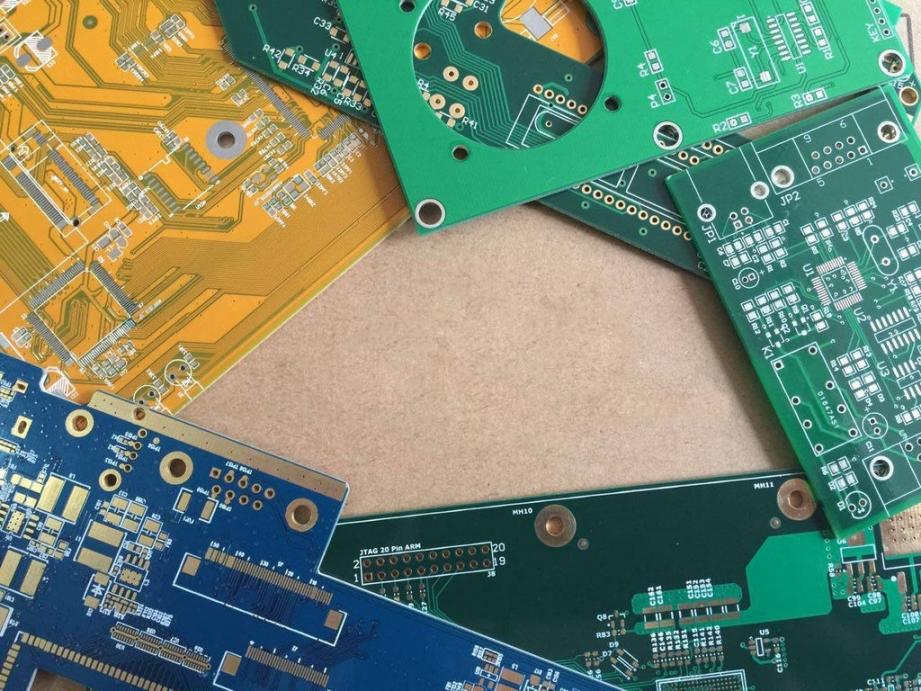Rigid-flex PCBs have emerged as pivotal components in modern electronics, offering flexibility and durability crucial for compact and intricate designs. Best FPC specializes in the advanced assembly of these boards, seamlessly integrating rigid and flexible elements. By leveraging epoxy pre-preg bonding films and precise electronic connections via plated through holes (PTH) and vias, Best FPC ensures robust and reliable performance in multi-layer flex circuits. As demands for smaller, more efficient electronic devices grow, the expertise of Best FPC in rigid-flex PCBs proves essential, driving innovation across various industries.

Understanding Rigid-Flex PCB Assembly
What are Rigid-Flex PCBs?
Rigid-flex PCBs integrate both rigid and flexible circuit boards into a single unit, connected by flexible layers that enable the board to bend or fold as needed. This integration employs epoxy pre-preg bonding films and plated through holes (PTH) for electrical connections. Key features include streamlined interconnect complexity and reduced weight, enhancing design flexibility and overall reliability.
Advantages of Rigid-Flex PCBs
Rigid-flex PCBs offer substantial benefits in contemporary electronics. Their flexible nature allows for intricate three-dimensional designs and reduces space requirements compared to traditional rigid PCBs and connectors. By eliminating connectors and minimizing solder joints, they bolster reliability and durability, making them well-suited for applications subjected to mechanical stress and vibration.
Applications
Industries spanning automotive, aerospace, medical devices, and consumer electronics capitalize on rigid-flex PCB technology. Automotive applications benefit from compact electronic control modules built to endure rugged conditions. Aerospace relies on them for weight-sensitive navigation systems. In medical devices, their reliability and compact form factor ensure precision and safety in diagnostic equipment.
Challenges in Rigid-Flex PCB Assembly
Design Complexity
Designing rigid-flex PCBs demands adept management of intricate layouts with multiple layers and flexible segments. Engineers must meticulously balance electrical performance with mechanical flexibility, ensuring the board remains functional through bending and folding actions.
Manufacturing Precision
High manufacturing precision is paramount to maintaining the reliability of rigid-flex PCBs. Consistent quality across diverse materials and thicknesses, coupled with precise tolerances for via alignment and layer registration, is essential. This precision mitigates issues like delamination and electrical shorts that could impair the board's performance.
Cost Considerations
The complexity inherent in designing and manufacturing rigid-flex PCBs often translates into higher production costs compared to traditional PCBs. Achieving a balance between cost-efficiency and performance necessitates thoughtful selection of materials, manufacturing processes, and assembly techniques. Cost-effective solutions must meet stringent quality standards while preserving the board's functionality and reliability.
Best FPC's Approach to Rigid-Flex PCB Assembly
Best FPC, a prominent manufacturer of rigid-flex circuit boards in China, excels in providing advanced capabilities tailored to diverse customer needs. Their manufacturing prowess includes:
Layer Configurations
Offering flexibility with 1-10 flexible layers and up to 40 rigid layers, accommodating various design complexities. They also support up to 50-layer rigid-flex circuits, enhancing versatility.

Materials
Utilizing Polyimide (PI) for flexible cores ranging from 1/2 mil to 4 mils in adhesive or adhesiveless constructions. Copper thickness ranges from 1/3 OZ to 2 OZ RA or ED type in flexible circuits and 1/2 OZ to 10 OZ in rigid circuits. Stiffeners include polyimide, FR4, stainless steel, and aluminum.
Additional Features
Providing options such as coverlays (1/2 mil to 2 mils polyimide), EMI/RF shielding films, blind and buried vias, and controlled impedance options (e.g., 50 ohm, 90 ohm, 100 ohm, 110 ohm). Surface finishing includes ENIG, ENEPIG, gold plating, and immersion silver, meeting IPC 6013 – Class II & Class III standards.
Quality Control
Implementing rigorous quality control measures like AOI (Automated Optical Inspection) and X-ray inspection to ensure high reliability and durability. AOI enhances production efficiency by scanning PCBAs and comparing solder joint data with qualified standards. X-ray inspection verifies BGA components for accurate soldering, maintaining quality standards throughout the manufacturing process.
Certifications
Their assembly services are certified under RoHS, ISO9001, and ISO13485 quality systems, adhering to IPC standards. This commitment ensures that Best FPC delivers superior quality and on-time delivery, making them a trusted partner for FPC assembly needs.
Success Stories
Example 1: Industry Application
Best FPC's rigid-flex PCBs have significantly enhanced performance in various industries. For instance, in automotive applications, their boards have enabled compact and reliable electronic control modules that withstand rugged environments, ensuring optimal vehicle performance and safety.
Example 2: Customer Testimonial
Best FPC's rigid-flex PCBs have exceeded our expectations in terms of quality and reliability. Their tailored solutions have significantly enhanced the performance and durability of our products. We trust Best FPC for their expertise and commitment to delivering on-time and to specification."
Satisfied Customer
Future Trends and Innovations
Emerging Technologies
Best FPC remains at the forefront of technological advancements in rigid-flex PCBs. They continuously explore new materials and design techniques to enhance board performance, reliability, and flexibility. Emerging technologies include advancements in flexible substrates, miniaturization, and integration capabilities, catering to evolving industry demands for compact and high-performance electronics.
Market Outlook
The market for rigid-flex PCBs is poised for substantial growth, driven by increasing demand across automotive, aerospace, medical, and consumer electronics sectors. Advancements in IoT devices, wearable technology, and smart appliances further propel the adoption of rigid-flex PCBs. Best FPC anticipates these trends and aligns its strategies to meet future market needs, ensuring continued innovation and leadership in the industry.
Final Words
Best FPC exemplifies excellence in rigid-flex PCB assembly, renowned for its innovative solutions and reliability in the industry. Their advanced manufacturing capabilities enable versatile layer configurations and precise material selections, ensuring tailored products that meet diverse customer requirements. Emphasizing stringent quality control with technologies like AOI and X-ray inspection underscores their commitment to delivering high-quality, durable solutions. With certifications in RoHS, ISO9001, and ISO13485, Best FPC maintains a reputation for trustworthiness and consistency in every project. Positioned at the forefront of emerging technologies and market trends, Best FPC is poised to lead the future of rigid-flex PCB assembly, driving efficiency, performance, and innovation across global industries.










 2024-06-24
2024-06-24
 BEST
BEST

.png)
.png)
.png)
.png)

.png)

